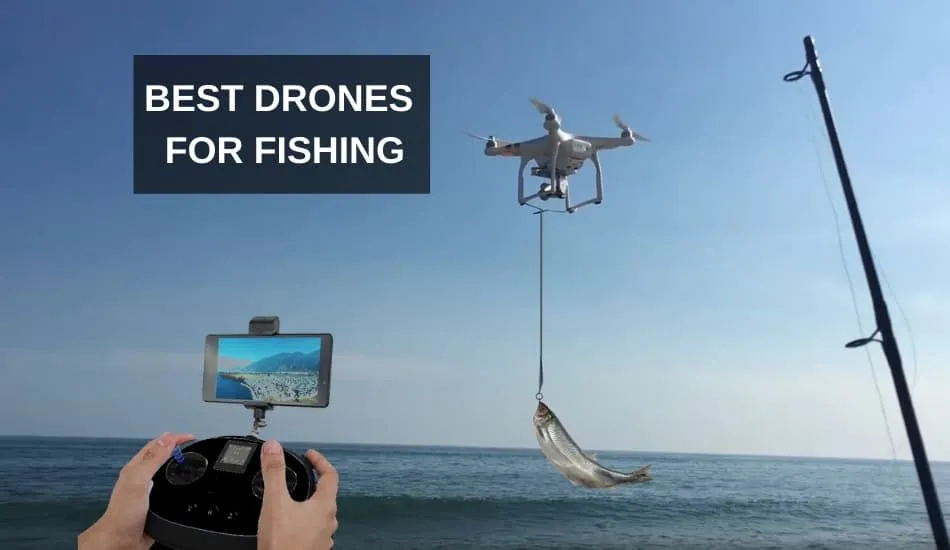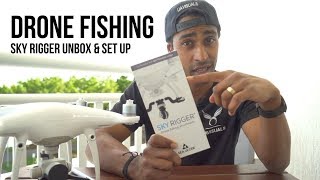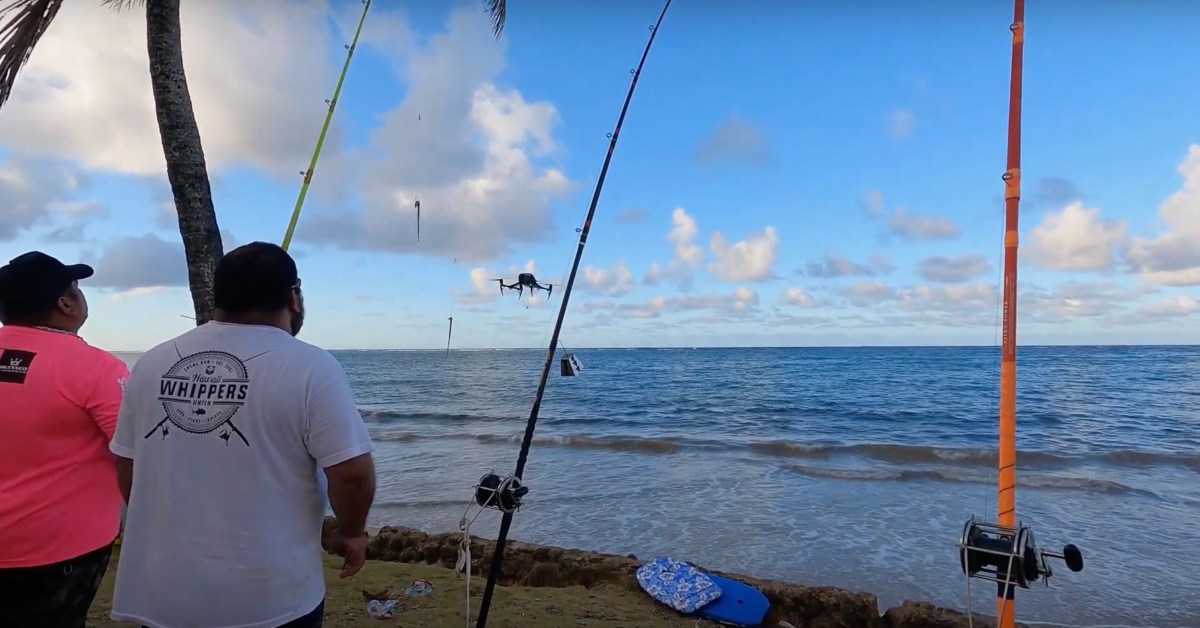
This article will discuss the basics behind a drone fishing system. We'll also look at what to pay attention to when choosing your drone, battery life, and payload. Next, we will discuss how to get the best drone. Keep reading to learn more. You will soon have the drone that you dream of! Let's go !... and maybe catch some fish!
Basic drone fishing equipment
To begin drone fishing, you'll need a good selection of hooks. You should double the fishing line and use mono or braid. The fishing line should be doubled and tied with a Cat's Paw Loop (or Uni knot). You'll also need a sinker between 2-8 ounces and hooks for attaching to each second section of your backbone. The final step is to attach the lead loop and end loop of your drone using a snap swivel.
There are many ways to create a fishing drone. The simplest method is to attach a hook to your drone's landing gear, and spin it until the line comes free. A dropper to keep your fishing line under the drone is another option. The dropper lets you keep the main line down below the drone and not get tangled with the propellers. Accessories such as docks and batteries can be added to fishing drones.
Once you have the basic drone fisherman rig purchased, you will need additional equipment. A fishing line that is approximately 700m long, as well as a bait-dropping apparatus are required. These are optional accessories, but they can make your drone fishing adventure more enjoyable. A drone will give you a clearer look of your surroundings so you can spot fish better.

Payload on drone fishing gear
Be aware of safety precautions if you want to catch fish by drone. You should never fly your drone in strong winds or rain. Here are some guidelines to follow:
First, ensure that your drone can carry a lot of weight. It won't be stable if loaded with braided rope or heavy lures. You should also be aware that the wind can cause the drone's drift if you fish at the coast. It is also important that you check your local laws and regulations, as some may not allow the use of drones for fishing. If you decide to fish with your drone, make sure it has a good carrying capacity.
The next step is to determine which accessories you'll need to mount on your drone. A good rule of thumb is to use a rigging system that has a central attachment point to reduce weight distribution problems. The best attachment points for drones are motor struts, landing gear, or legs. Payloads attached to the camera and/or gimbal can cause damage. A simple solution is to tie a length of fishing line from one corner to the other. You can secure it with tape to stop it from coming off.
The battery life of drone fishing rigs
Before going out fishing with your drone, be sure to check the batteries and the other gear. This will ensure that your drone doesn't run out of battery and allow you to concentrate on fishing rather than recharging. You may be able to charge your drones using solar panels or batteries from your car. Make sure your batteries are fully charged before you start. This will make sure your drone is ready when you arrive at your fishing spot.

You should also consider the drone's flight duration. There are some models that have longer flight time than others. However, a drone with a flight time of twenty-two minutes is sufficient to get the job done. This is a great option if you plan to spend hours on the ocean with your drone. However, a drone that is not able to sustain long distances will render it inoperable. This will make it almost impossible to catch fish.
Once you have set up your fishing rig, attach your fishing line clip to the legs of the drone, or to the motor struts. Attach the bait and line to the drone. Make sure that you lock your reel before you fly your drone. Once you are ready, unlock it. As the drone drops the bait into the water, the tension will increase. It is important to charge your battery before each use or the drone may stop working properly.
FAQ
A drone can spy on you.
A drone can be used to spy on anyone. The only way to protect yourself from drones is to be aware of them and avoid areas where they may fly. Do not hesitate to call 911 if a drone is seen flying.
What are the laws regarding flying drones
In the United States, the Federal Aviation Administration (FAA) regulates all aspects of drone operations. A certificate issued by the FAA is required to commercially operate a drone. First, you need to take a course about piloting and pass an exam. You will then need to pay an agency fee.
Can I fly my drone around my neighborhood?
Yes! These are called UAVs (unmanned aerial vehicles). There are many kinds of drones today. They range from small quadcopters, to large fixed-wing planes. The FAA recently published new rules on commercial UAV usage, which allows you to legally fly them for commercial purposes. It is important to remember that UAVs are not allowed near airports.
Is it possible to fly a helicopter while driving?
Drone flying at high speed is dangerous. You may also run into pedestrians and other animals. Your car could be damaged if it hits power lines or trees.
What laws apply to drones flying above private property?
Recently, the FAA issued new rules regarding commercial drone flight. These rules apply only to UAVs weighing less than 55 pounds and flying below 400 feet above ground level. Commercial operators need to register with the FAA in order to obtain a license. Local authorities must also approve them if they are operating near airports or in other restricted areas.
How can I keep drones off my property?
Drones have become increasingly popular for home surveillance. But they also pose a security threat to privacy. You can prevent drone attacks by installing motion sensors around your home and using them to detect any unauthorised flying objects.
Statistics
- According to ZipRecruiter, the minimum hourly wage of drone pilots is $20. (thedroneu.com)
- According to Indeed, a drone pilot gets paid $25.73 per hour on average in the US. (dronesgator.com)
- According to the multiple listing service (MLS), houses and apartments with drone photographs are up to 68 percent more likely to sell than those without pictures. (thedroneu.com)
External Links
How To
How to Fly Drones with Beginners
A drone is a remotely-controlled aircraft that is used for aerial photography and surveillance. The technology behind drones has been around since World War II. DJI introduced their Phantom series of quadcopters in 2010, but commercial use only began in 2010. From beginner-friendly drones such as Parrot AR Drone 2.0 through professional-grade multirotor craft like DJI Mavic Pro, many types have been available.
There are many methods to fly a Drone, including
-
Remote control – This technique uses a control device attached directly to your hands that allows you steer the drone around its flight path. There are two types of controllers available: joysticks and on/off switches.
-
Manual Control - Using a smartphone app, this method allows users to remotely operate the drone via GPS coordinates. You will need to keep track of where the drone is going and follow the directions from the app.
-
Autonomous Flight: This means that the drone will take care of all the piloting. It is basically flying autonomously and without human intervention. A drone must have a builtin camera and sensors capable to capture images and other data.
-
Triggered Flying - This method works in the same way as manual control. However, the pilot has to manually set up a route for the drone and it follows that route until reaching the endpoint. The drone automatically lands once the route has been completed and returns to the base.
-
Landing Gear- Some drones include landing gear that allows for safe landing if the power goes out or they run out of batteries.
-
Goggles: Some pilots use goggles in order to protect themselves against debris when operating.
-
Camera - Some drones are equipped with cameras allowing you to capture photos and videos from above.
-
Obstacles - Some drones can be equipped with obstacle avoidance systems that prevent them from crashing into obstacles.
-
Speed - Some drones reach speeds exceeding 40 mph.
-
Battery Life - Most drones can last between 20 minutes to 3 hours, depending on how much power you're using.
-
Some drones have a range of up to 30 miles, depending on their model.
-
Power source - Some drones require an external power source; others work off internal batteries.
-
Weight - Some drones are lighter than others, while some models can weigh as much as 4 pounds.
-
Size - Drones can range in size from tiny devices that can fit in your palm to heavy crafts that weigh 50 pounds.
-
Price - All drones fall within a specific price range, from high-end models that can cost thousands of dollars to lower-cost options starting at $100.